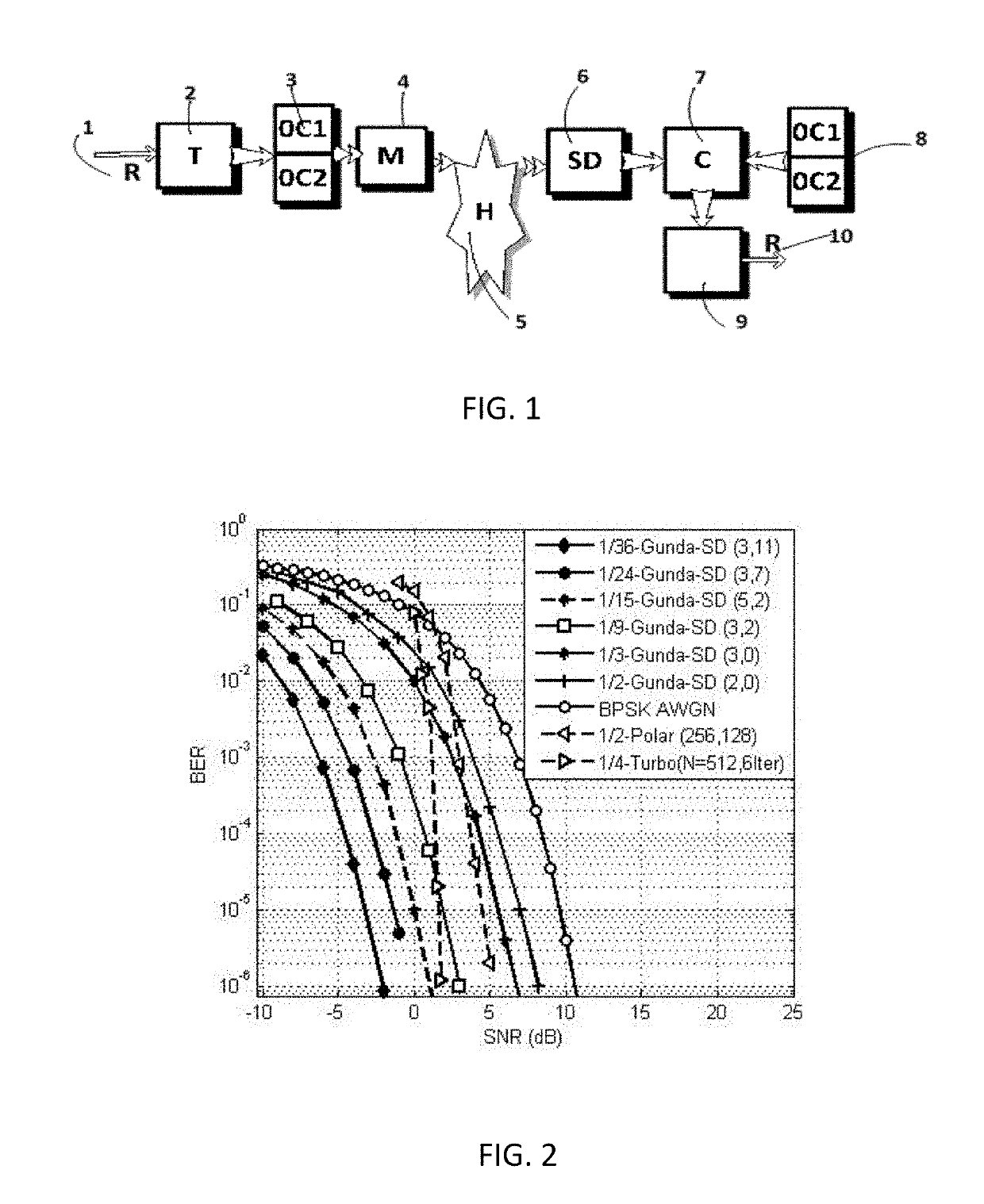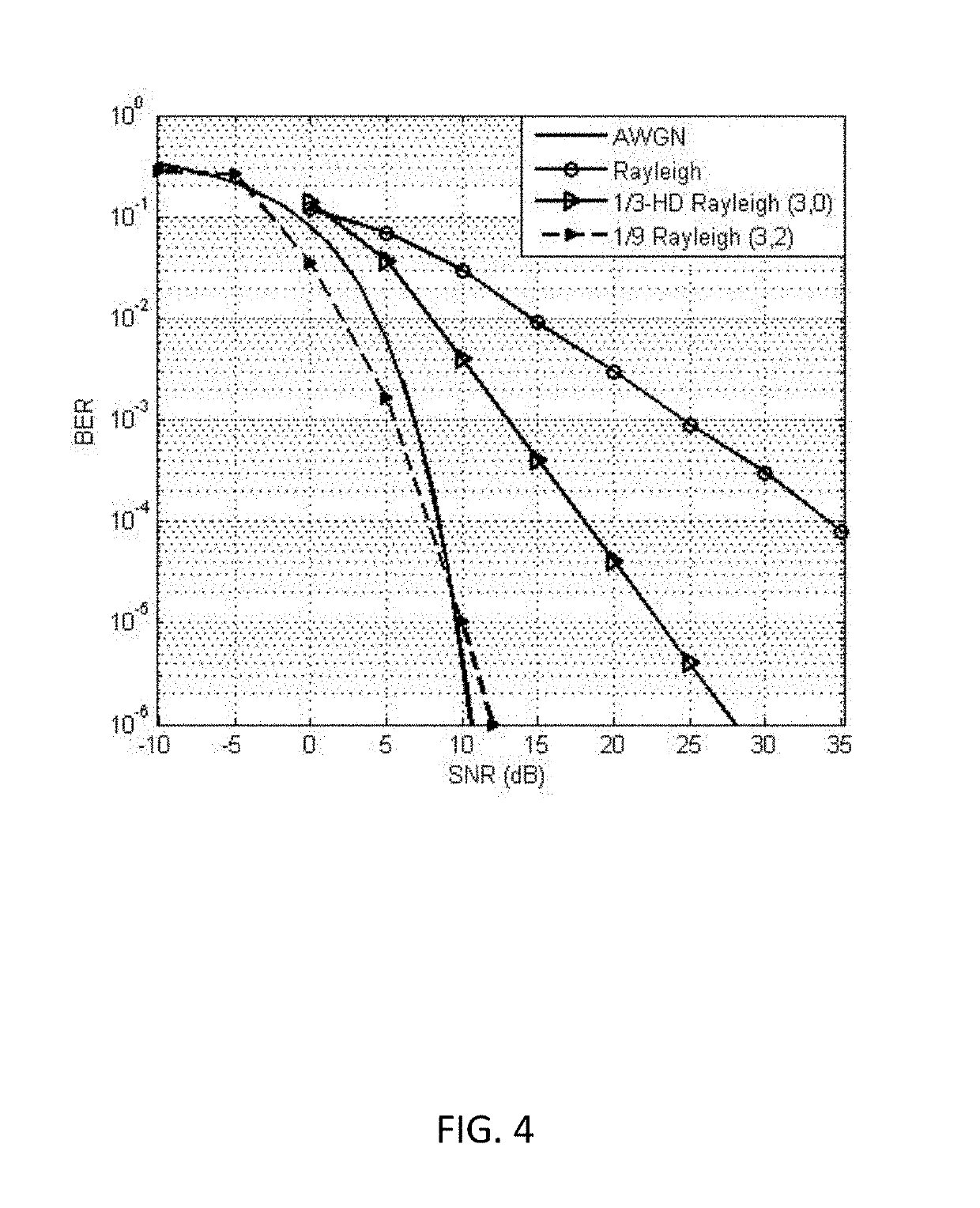Systems and methods for communication
a communication system and signal processing technology, applied in the field of digital communication, signal processing, information encoding, can solve the problems of incongruous symbols, color coding requires more complex single-in single-out (siso) decoding, and the gaussian channel performance of conventional repetition coding is known to be poor, so as to achieve high signal quality, improve signal quality, and reduce the bit error rate of cofcm.
- Summary
- Abstract
- Description
- Claims
- Application Information
AI Technical Summary
Benefits of technology
Problems solved by technology
Method used
Image
Examples
Embodiment Construction
[0253]Throughout this disclosure, there is discussion of electromagnetic signals transmitted through a medium. Suitable mediums include, for example, air and vacuum (e.g., for radio signal propagation and the like) as well as channeled mediums such as metal wires, fiber optic cabling, or the like. Transmitting is understood in the normal sense, to include any necessary formatting steps in order to transmit a signal via an intended medium. Such steps include electromagnetic signal modulation, filtering, amplifying, and the like.
[0254]Various methods of transmission and receipt of encoded information (i.e., digital information encoded on an electromagnetic signal) are described herein, and the skilled artisan will appreciate that a variety of transmitting and receiving devices may be used to carry out such methods. Such devices may be dual purpose (e.g., transceivers) or single purpose devices, and may include computer processors or may be entirely analog devices, as appropriate and d...
PUM
 Login to View More
Login to View More Abstract
Description
Claims
Application Information
 Login to View More
Login to View More - R&D
- Intellectual Property
- Life Sciences
- Materials
- Tech Scout
- Unparalleled Data Quality
- Higher Quality Content
- 60% Fewer Hallucinations
Browse by: Latest US Patents, China's latest patents, Technical Efficacy Thesaurus, Application Domain, Technology Topic, Popular Technical Reports.
© 2025 PatSnap. All rights reserved.Legal|Privacy policy|Modern Slavery Act Transparency Statement|Sitemap|About US| Contact US: help@patsnap.com



